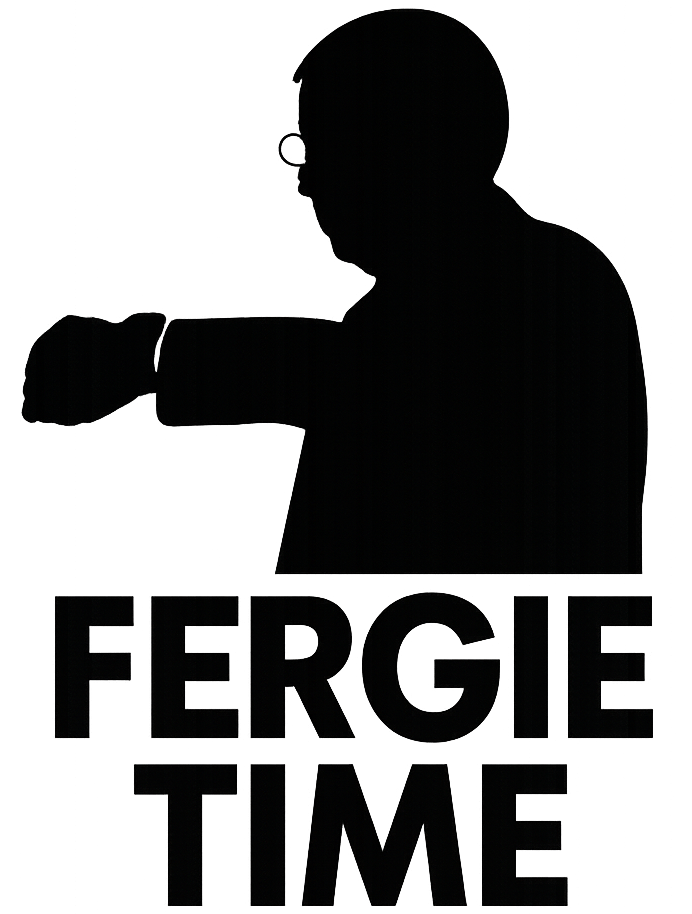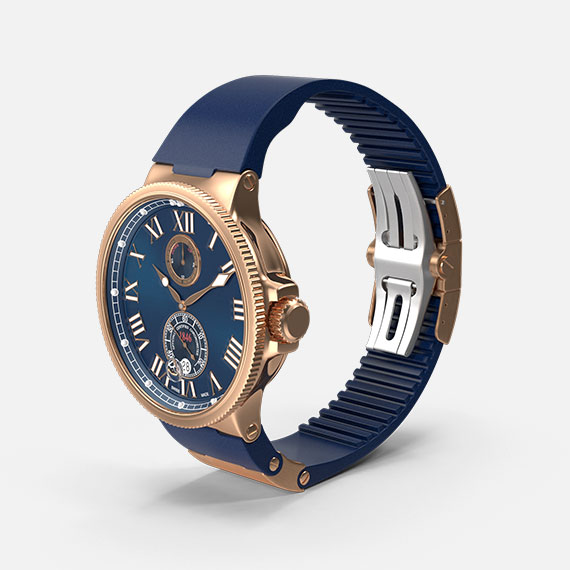Old Trafford History: From Inception to Icon
Old Trafford has been Manchester United’s iconic stadium since 1910. This article explores Old Trafford history, from its grand opening to pivotal moments that shaped its legacy. Discover how this stadium became a symbol of resilience and triumph in football.
Key Takeaways
- Old Trafford opened in 1910 and quickly became a historic venue for Manchester United, though it faced challenges like capacity reductions and damage during WWII.
- Sir Matt Busby’s era from 1945 to 1969 transformed Manchester United into a powerhouse, marked by triumphs like the first European Cup win in 1968 and the tragedy of the Munich Air Disaster.
- Today, Old Trafford is a modern stadium with a rich history, hosting memorable matches and offering tours to fans, making it a must-visit for football lovers.
Early Years of Old Trafford
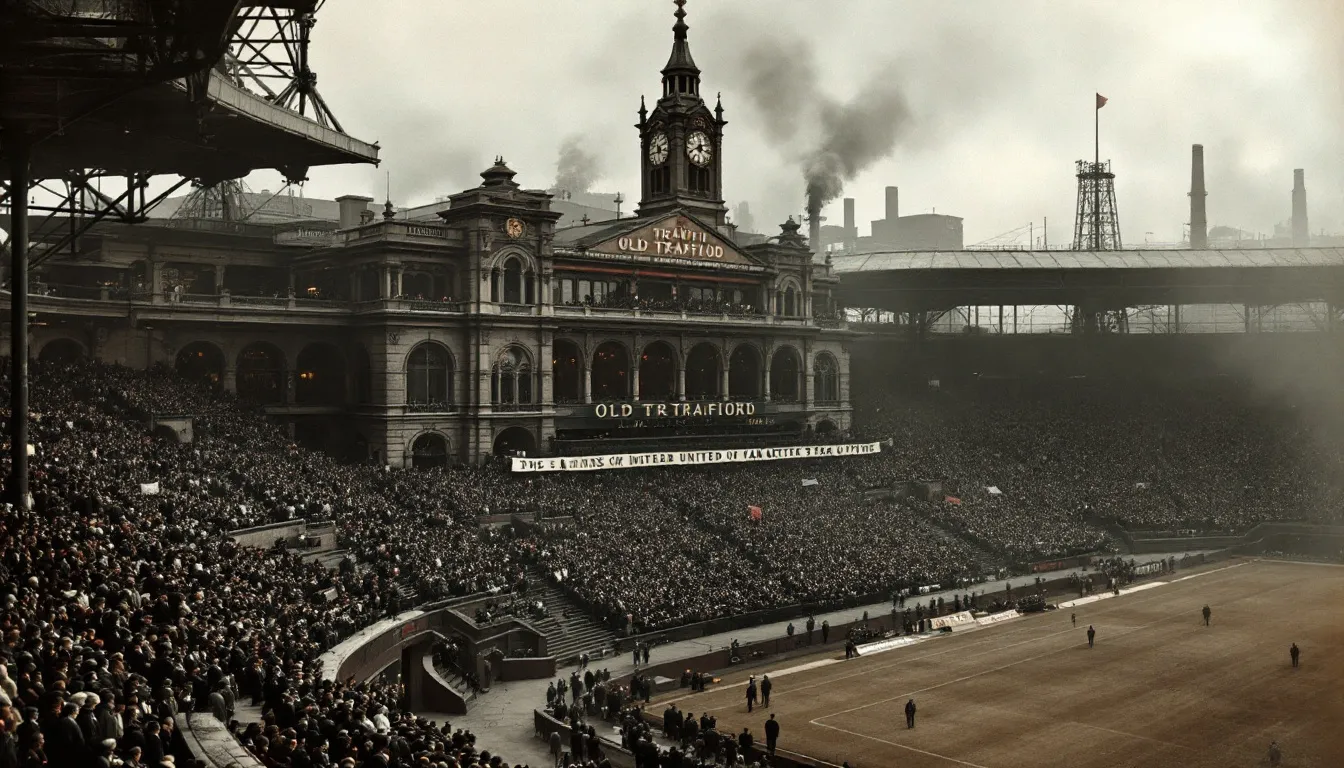
Old Trafford officially opened its gates on February 19, 1910, marking the beginning of a new era for Manchester United. Designed by the renowned Scottish architect Archibald Leitch, who was famous for his work on various sports venues, the stadium was initially intended to hold approximately 100,000 spectators. However, due to rising costs, the capacity was later reduced to about 80,000. At its opening, a journalist lauded the stadium as ‘the most handsome’ and ‘the most remarkable arena’, setting the tone for the grand legacy that was to follow.
The inaugural match at Old Trafford was a thrilling encounter between Manchester United and Liverpool, held on the very day the stadium opened. This match was not just a game; it was a spectacle that drew immense attention and set the stage for many historic moments to come. Despite the excitement, the match ended in a 4-3 defeat for Manchester United, but the significance of the event was far greater than the scoreline.
With its vast terraces and impressive design, Old Trafford quickly became a beloved venue for United fans. The initial capacity of around 100,000 was ambitious and showcased the club’s vision for the future. However, practical considerations led to a reduction in capacity to about 80,000, which still made it one of the largest football grounds in the country. This early period set the foundation for Old Trafford’s storied history, solidifying its place as the football ground home of Manchester United.
Impact of World War II on Old Trafford
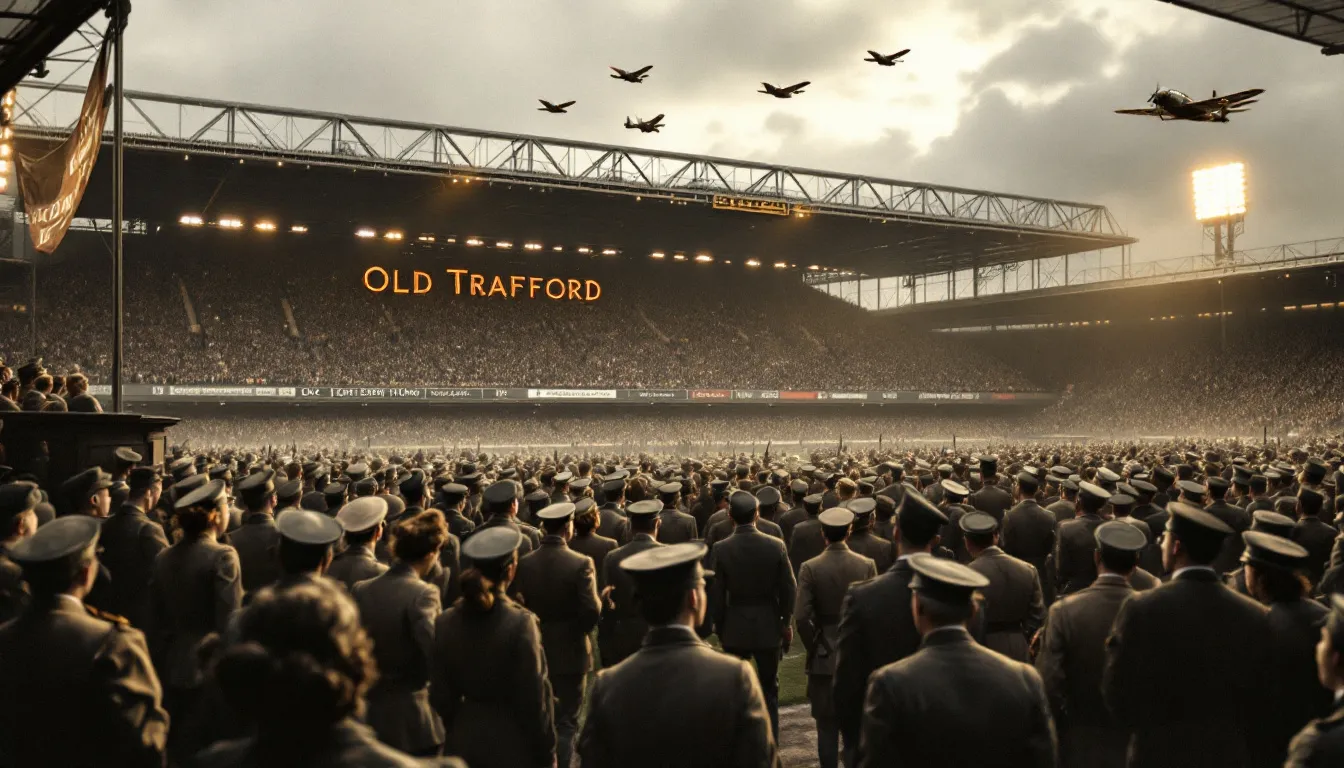
The outbreak of the second world war brought unforeseen challenges to Old Trafford. On March 11, 1941, the stadium was heavily damaged when two bombs struck during German air raids. The main stand, club offices, and much of the terracing were destroyed, leaving Manchester United with significant rebuilding efforts ahead. This devastating event marked a period of struggle and resilience for the club.
With Old Trafford rendered unusable, Manchester United FC had to find an alternative venue for their home matches. From 1941 to 1949, the team played at Maine Road, the home ground of their city rivals, Manchester City. This period was challenging not only because of the physical damage but also due to the psychological impact on the club and its supporters. The war had disrupted many aspects of life, and football was no exception.
The post-war rebuilding efforts were monumental. When Old Trafford finally reopened in 1949, the main stand was uncovered, a stark reminder of the war’s devastation. Nevertheless, the club’s determination to restore their entire ground was unwavering.
Floodlights were installed in 1957, representing the first major renovation after the war in the 20th century. The resilience shown by Manchester United during this challenging period laid the foundation for future successes and set a precedent for overcoming adversity.
The Busby Era
The arrival of Sir Matt Busby in 1945 heralded a transformative period for Manchester United Football Club. Over his 24-year tenure, Busby led the team to five league titles and two FA Cups, establishing United as one of the most successful clubs in English football. His vision and leadership were instrumental in shaping the club’s identity and success.
However, the Busby Era was not without its tragedies. The Munich Air Disaster in 1958 struck a devastating blow to the club, taking the lives of several key players and leaving Busby severely injured. Despite the immense personal and professional challenges, Busby’s determination to rebuild the team never wavered. His resilience became a symbol of the club’s spirit, especially in the wake of the Munich air crash.
Following the disaster, Busby set about constructing a new team, famously known as the second generation of ‘Busby Babes’. This team included legendary players like George Best, Bobby Charlton, and Denis Law. By the late 1960s, Manchester United had become a dominant force in English football, thanks to Busby’s unwavering dedication and strategic vision.
The pinnacle of Busby’s career came in 1968 when Manchester United became the first English team to win the European Cup. This achievement, ten years after the Munich disaster, showcased Busby’s successful rebuilding efforts and solidified his legacy. His management style, which emphasized youth development, set the stage for Manchester United’s reputation for nurturing young talent.
Under Busby’s guidance, the team flourished, with legends like Bobby Charlton, George Best, and Denis Law becoming household names. His era was marked by both triumph and tragedy, but ultimately, it was a period that defined Manchester United’s enduring legacy in the world of football.
Major Renovations and Expansions
As Manchester United continued to grow in stature, so did the need for a new stadium that could accommodate its expanding fan base. The North Stand was reconstructed between 1995 and 1996, introducing a three-tiered design that significantly increased the stadium’s capacity. This major renovation was a testament to the club’s vision for the future.
In 2000, the East Stand was expanded to include a second tier, adding approximately 7,000 seats to Old Trafford’s total capacity. This expansion was crucial in maintaining Old Trafford’s status as one of the largest and most impressive football stadiums in the world.
The West Stand, known as the Stretford End, underwent redevelopment during the 1992-93 season. The conversion from terracing to seating was a necessary step to comply with safety regulations and ensure the comfort and safety of the fans at the Sir Alex Ferguson Stand.
The most recent expansion from 2005 to 2006 added around 8,000 seats by introducing second tiers to the north quadrants. These renovations and expansions have ensured that Old Trafford remains a top-tier stadium, capable of hosting significant matches and events.
Iconic Matches and Events
Old Trafford has been the stage for numerous iconic matches and events over the years. The first FA Cup Final held at Old Trafford was in 1911, where Bradford City defeated Newcastle United. This historic event was the beginning of many memorable moments at the stadium.
Over the years, Old Trafford has hosted multiple FA Cup Finals and semi-finals, serving as a neutral ground for important matches. The record attendance at Old Trafford occurred during an FA Cup semi-final in 1939, with 76,962 fans in attendance. These events have showcased the stadium’s ability to host large and significant football matches, adding to its historical significance.
In addition to domestic matches, Old Trafford has also been a key venue for international events. In 1996, it was selected as one of the hosts for UEFA Euro 1996 matches, including a semi-final. The stadium also hosted three group matches during the 1966 World Cup, further cementing its place in football history. Notably, Old Trafford hosted the 2003 UEFA Champions League Final, marking its importance in European championships football.
Modern Day Old Trafford
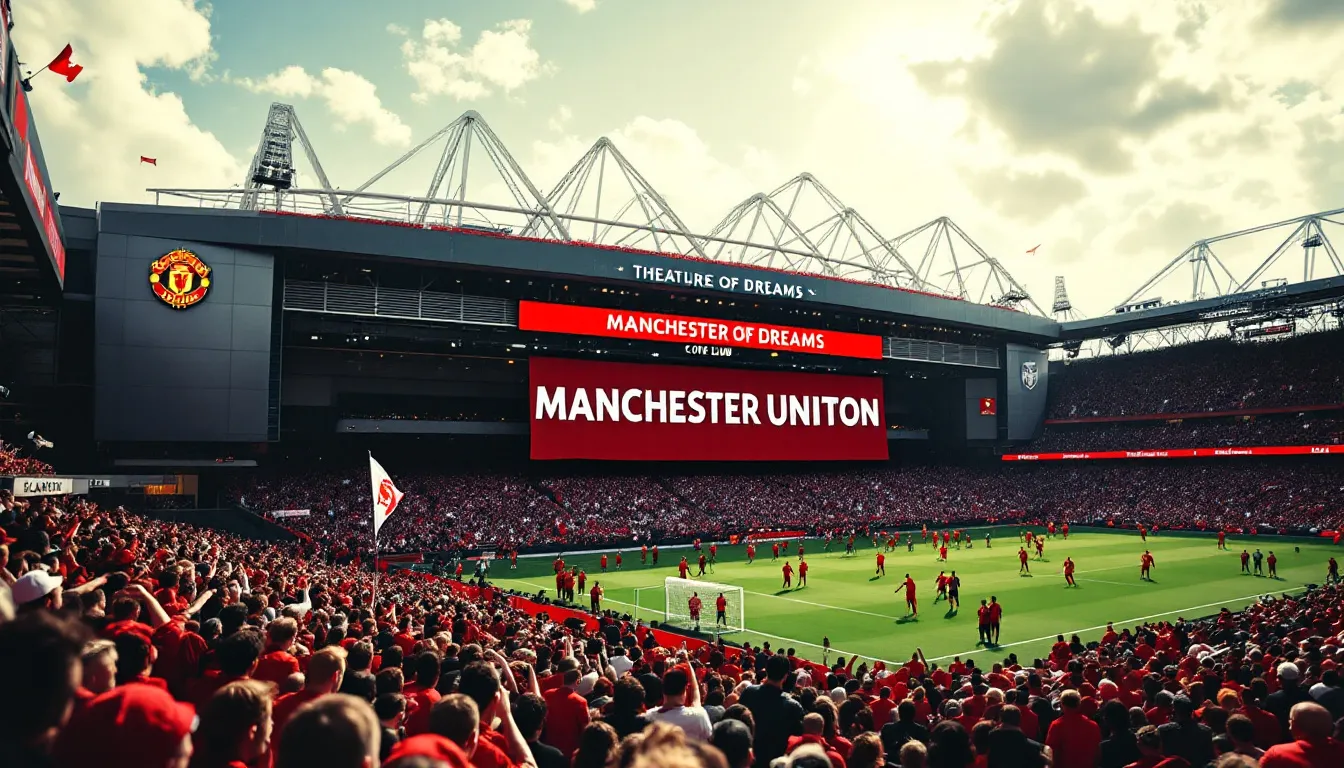
Today, Old Trafford stands as a modern marvel in the world of football stadiums. Located at Sir Matt Busby Way, Old Trafford, Manchester, M16 0RA, the stadium has undergone numerous renovations to maintain its status as a premier venue. The additions in the 1960s, including the United Road (North) Stand and the first private boxes, have enhanced the overall experience for fans.
The stadium’s seating capacity and facilities are a testament to its grandeur. After World War II, when Old Trafford was being repaired, Manchester United played their home games at Maine Road. The first goal at the rebuilt Old Trafford was scored by Charlie Mitten, marking an emotional return to their home ground.
For those wishing to attend a match, tickets can only be purchased online, with prices ranging from £31.00 to £53.00. A membership costing £20.00 per year is required to purchase tickets. This process ensures that the stadium remains accessible to the dedicated fans of Manchester United.
The experience of visiting Old Trafford today is unparalleled. From the state-of-the-art facilities to the rich history embedded in every corner, it’s no wonder that Old Trafford is often referred to as the “Theatre of Dreams.” Whether attending a match or taking a stadium tour, the atmosphere and legacy of Old Trafford are palpable.
Old Trafford Stadium Tours
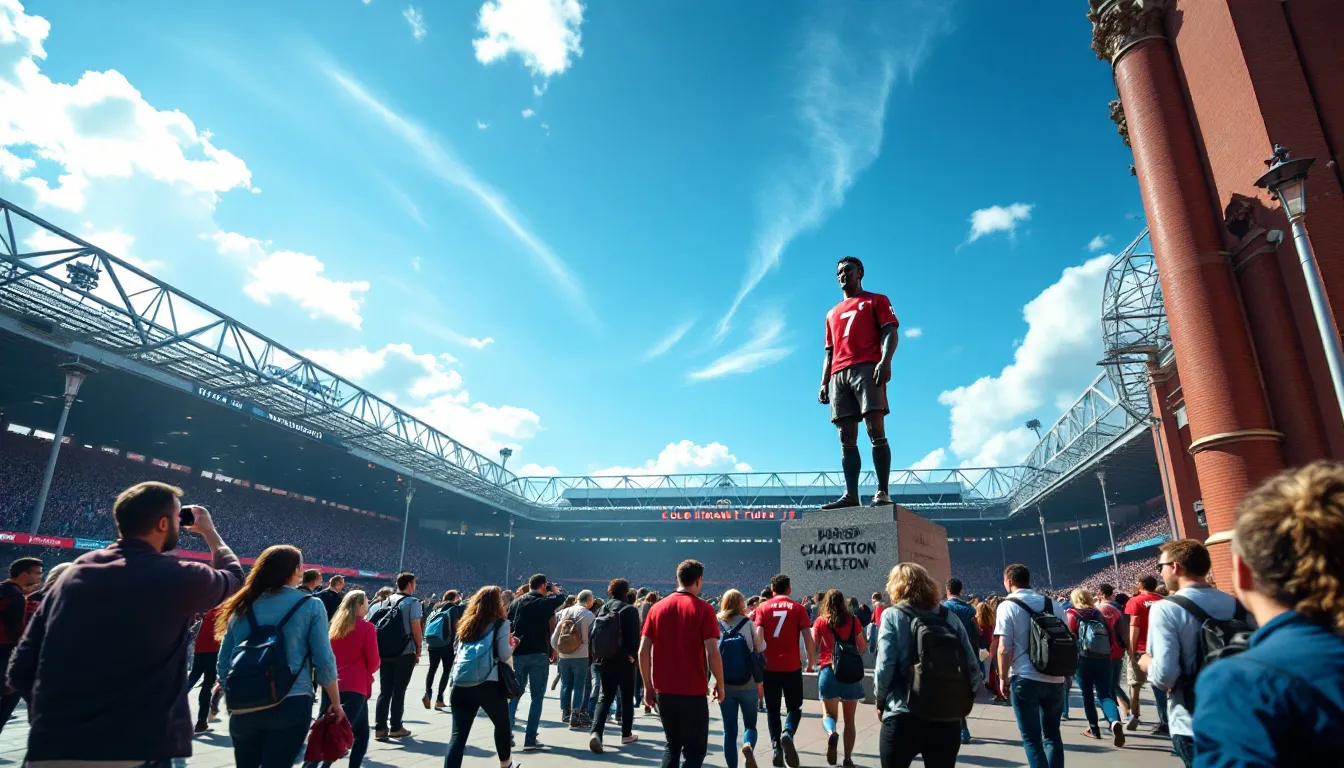
Stadium tours offer a unique insight into the history and operations of Manchester United for those exploring Old Trafford beyond match days. The tour lasts for 70 minutes and costs £18.00, providing an in-depth look at one of the most famous football grounds in the world.
Visitors on the tour can expect to see the players’ tunnel, changing rooms, and other behind-the-scenes areas that are usually off-limits during match days. For those with less time, a ‘look-in’ tour offers a shorter experience focusing on the museum and stadium bowl.
It’s important to note that guided tours are unavailable on home match days, so planning ahead is essential. Adults can purchase a ‘look-in’ tour ticket starting at £23. These tours provide a comprehensive and engaging experience for fans and visitors alike, immersing them in the rich history of Manchester United and Old Trafford.
How to Visit Old Trafford
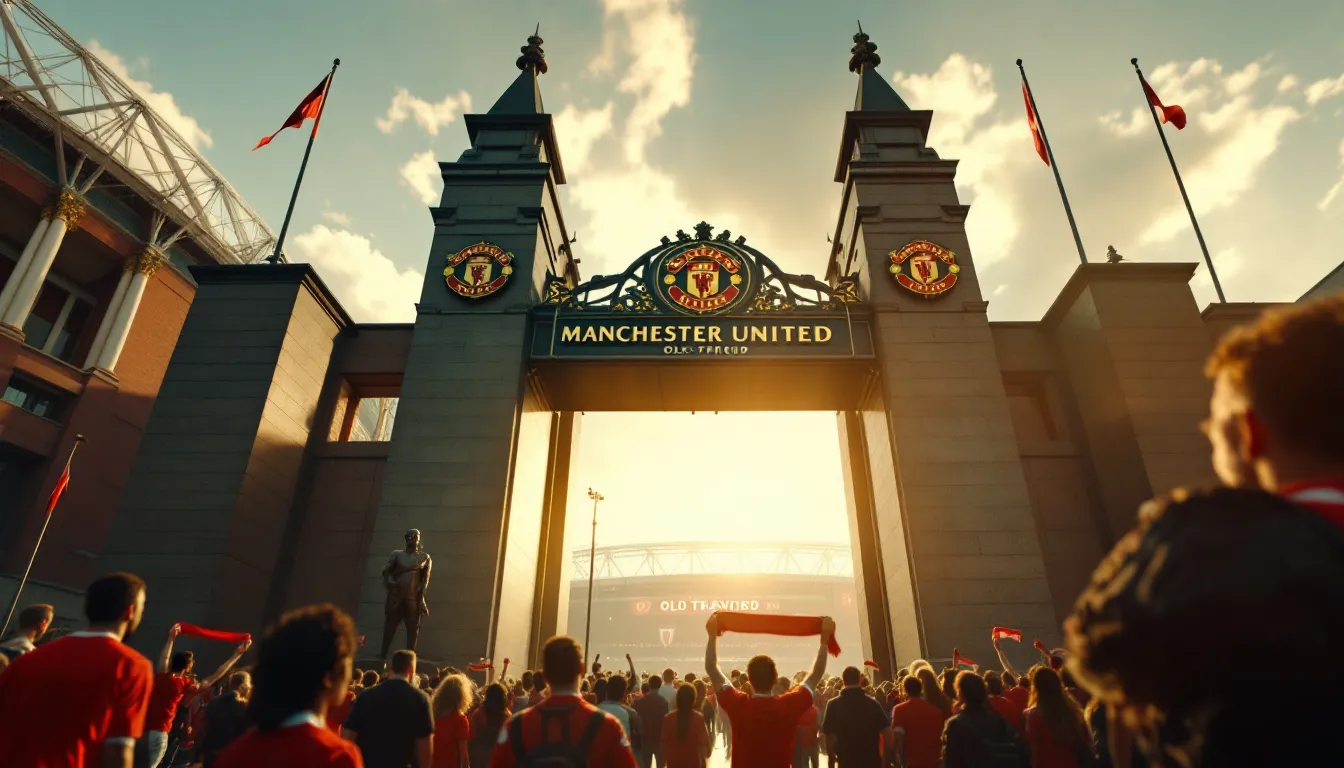
Visiting Old Trafford is an experience that every football fan should have. The stadium is easily accessible by various modes of transport, including tram, bus, car, train, bike, or on foot. However, the best public transport option to reach Old Trafford is the Metrolink overground metro, which provides a convenient and efficient way to get to the stadium.
Drivers are advised to use the postcode M16 0SZ for non-match days to easily navigate to the Trafford football stadium. The stadium’s location on Sir Matt Busby Way in Trafford, Manchester, makes it a prominent landmark that is hard to miss.
Whether you’re attending a match, taking a stadium tour, or simply visiting the Manchester United Museum, Old Trafford offers a wealth of experiences for fans and visitors. The journey to Old Trafford is as much a part of the experience as the visit itself, providing a glimpse into the rich history and culture of Manchester United.
Summary
Old Trafford’s journey from its inception to its modern-day status as the “Theatre of Dreams” is a story of resilience, innovation, and unwavering dedication. From the early years and the challenges of World War II to the transformative Busby Era and significant renovations, every chapter in Old Trafford’s history has contributed to its legendary status.
In conclusion, Old Trafford is not just a stadium; it’s a symbol of Manchester United’s rich heritage and enduring legacy. As you walk through its stands and feel the roar of the crowd, you become a part of a history that spans over a century. Whether you’re a lifelong fan or a first-time visitor, Old Trafford promises an unforgettable experience that captures the essence of football.
Frequently Asked Questions
When did Old Trafford officially open?
Old Trafford officially opened on February 19, 1910. It’s pretty amazing to think about its storied history since then!
How was Old Trafford affected by World War II?
Old Trafford took a hit during World War II when it got bombed on March 11, 1941, which left the main stand, club offices, and a lot of the terracing in ruins. It was a tough time for the stadium, but it eventually bounced back.
What were some significant renovations at Old Trafford?
Old Trafford saw some big changes like the North Stand reconstruction in ’95-’96, the East Stand expansion in 2000, and the West Stand redevelopment during the ’92-’93 season. These upgrades really helped modernize the stadium!
What iconic matches have been held at Old Trafford?
Old Trafford has seen some iconic matches like the first FA Cup Final in 1911, the 1966 World Cup group matches, and the 2003 UEFA Champions League Final. It’s definitely a legendary venue in football history!
How can I visit Old Trafford?
You can easily visit Old Trafford by taking the Metrolink tram, which is the best public transport option. For non-match days, just use the postcode M16 0SZ for your sat nav.
Old Trafford has been Manchester United’s iconic stadium since 1910. This article explores Old Trafford history, from its grand opening to pivotal moments that shaped its legacy. Discover how this stadium became a symbol of resilience and triumph in football.
Key Takeaways
- Old Trafford opened in 1910 and quickly became a historic venue for Manchester United, though it faced challenges like capacity reductions and damage during WWII.
- Sir Matt Busby’s era from 1945 to 1969 transformed Manchester United into a powerhouse, marked by triumphs like the first European Cup win in 1968 and the tragedy of the Munich Air Disaster.
- Today, Old Trafford is a modern stadium with a rich history, hosting memorable matches and offering tours to fans, making it a must-visit for football lovers.
Early Years of Old Trafford
Old Trafford officially opened its gates on February 19, 1910, marking the beginning of a new era for Manchester United. Designed by the renowned Scottish architect Archibald Leitch, who was famous for his work on various sports venues, the stadium was initially intended to hold approximately 100,000 spectators. However, due to rising costs, the capacity was later reduced to about 80,000. At its opening, a journalist lauded the stadium as ‘the most handsome’ and ‘the most remarkable arena’, setting the tone for the grand legacy that was to follow.
The inaugural match at Old Trafford was a thrilling encounter between Manchester United and Liverpool, held on the very day the stadium opened. This match was not just a game; it was a spectacle that drew immense attention and set the stage for many historic moments to come. Despite the excitement, the match ended in a 4-3 defeat for Manchester United, but the significance of the event was far greater than the scoreline.
With its vast terraces and impressive design, Old Trafford quickly became a beloved venue for United fans. The initial capacity of around 100,000 was ambitious and showcased the club’s vision for the future. However, practical considerations led to a reduction in capacity to about 80,000, which still made it one of the largest football grounds in the country. This early period set the foundation for Old Trafford’s storied history, solidifying its place as the football ground home of Manchester United.
Impact of World War II on Old Trafford
The outbreak of the second world war brought unforeseen challenges to Old Trafford. On March 11, 1941, the stadium was heavily damaged when two bombs struck during German air raids. The main stand, club offices, and much of the terracing were destroyed, leaving Manchester United with significant rebuilding efforts ahead. This devastating event marked a period of struggle and resilience for the club.
With Old Trafford rendered unusable, Manchester United FC had to find an alternative venue for their home matches. From 1941 to 1949, the team played at Maine Road, the home ground of their city rivals, Manchester City. This period was challenging not only because of the physical damage but also due to the psychological impact on the club and its supporters. The war had disrupted many aspects of life, and football was no exception.
The post-war rebuilding efforts were monumental. When Old Trafford finally reopened in 1949, the main stand was uncovered, a stark reminder of the war’s devastation. Nevertheless, the club’s determination to restore their entire ground was unwavering.
Floodlights were installed in 1957, representing the first major renovation after the war in the 20th century. The resilience shown by Manchester United during this challenging period laid the foundation for future successes and set a precedent for overcoming adversity.
The Busby Era
The arrival of Sir Matt Busby in 1945 heralded a transformative period for Manchester United Football Club. Over his 24-year tenure, Busby led the team to five league titles and two FA Cups, establishing United as one of the most successful clubs in English football. His vision and leadership were instrumental in shaping the club’s identity and success.
However, the Busby Era was not without its tragedies. The Munich Air Disaster in 1958 struck a devastating blow to the club, taking the lives of several key players and leaving Busby severely injured. Despite the immense personal and professional challenges, Busby’s determination to rebuild the team never wavered. His resilience became a symbol of the club’s spirit, especially in the wake of the Munich air crash.
Following the disaster, Busby set about constructing a new team, famously known as the second generation of ‘Busby Babes’. This team included legendary players like George Best, Bobby Charlton, and Denis Law. By the late 1960s, Manchester United had become a dominant force in English football, thanks to Busby’s unwavering dedication and strategic vision.
The pinnacle of Busby’s career came in 1968 when Manchester United became the first English team to win the European Cup. This achievement, ten years after the Munich disaster, showcased Busby’s successful rebuilding efforts and solidified his legacy. His management style, which emphasized youth development, set the stage for Manchester United’s reputation for nurturing young talent.
Under Busby’s guidance, the team flourished, with legends like Bobby Charlton, George Best, and Denis Law becoming household names. His era was marked by both triumph and tragedy, but ultimately, it was a period that defined Manchester United’s enduring legacy in the world of football.
Major Renovations and Expansions
As Manchester United continued to grow in stature, so did the need for a new stadium that could accommodate its expanding fan base. The North Stand was reconstructed between 1995 and 1996, introducing a three-tiered design that significantly increased the stadium’s capacity. This major renovation was a testament to the club’s vision for the future.
In 2000, the East Stand was expanded to include a second tier, adding approximately 7,000 seats to Old Trafford’s total capacity. This expansion was crucial in maintaining Old Trafford’s status as one of the largest and most impressive football stadiums in the world.
The West Stand, known as the Stretford End, underwent redevelopment during the 1992-93 season. The conversion from terracing to seating was a necessary step to comply with safety regulations and ensure the comfort and safety of the fans at the Sir Alex Ferguson Stand.
The most recent expansion from 2005 to 2006 added around 8,000 seats by introducing second tiers to the north quadrants. These renovations and expansions have ensured that Old Trafford remains a top-tier stadium, capable of hosting significant matches and events.
Iconic Matches and Events
Old Trafford has been the stage for numerous iconic matches and events over the years. The first FA Cup Final held at Old Trafford was in 1911, where Bradford City defeated Newcastle United. This historic event was the beginning of many memorable moments at the stadium.
Over the years, Old Trafford has hosted multiple FA Cup Finals and semi-finals, serving as a neutral ground for important matches. The record attendance at Old Trafford occurred during an FA Cup semi-final in 1939, with 76,962 fans in attendance. These events have showcased the stadium’s ability to host large and significant football matches, adding to its historical significance.
In addition to domestic matches, Old Trafford has also been a key venue for international events. In 1996, it was selected as one of the hosts for UEFA Euro 1996 matches, including a semi-final. The stadium also hosted three group matches during the 1966 World Cup, further cementing its place in football history. Notably, Old Trafford hosted the 2003 UEFA Champions League Final, marking its importance in European championships football.
Modern Day Old Trafford
Today, Old Trafford stands as a modern marvel in the world of football stadiums. Located at Sir Matt Busby Way, Old Trafford, Manchester, M16 0RA, the stadium has undergone numerous renovations to maintain its status as a premier venue. The additions in the 1960s, including the United Road (North) Stand and the first private boxes, have enhanced the overall experience for fans.
The stadium’s seating capacity and facilities are a testament to its grandeur. After World War II, when Old Trafford was being repaired, Manchester United played their home games at Maine Road. The first goal at the rebuilt Old Trafford was scored by Charlie Mitten, marking an emotional return to their home ground.
For those wishing to attend a match, tickets can only be purchased online, with prices ranging from £31.00 to £53.00. A membership costing £20.00 per year is required to purchase tickets. This process ensures that the stadium remains accessible to the dedicated fans of Manchester United.
The experience of visiting Old Trafford today is unparalleled. From the state-of-the-art facilities to the rich history embedded in every corner, it’s no wonder that Old Trafford is often referred to as the “Theatre of Dreams.” Whether attending a match or taking a stadium tour, the atmosphere and legacy of Old Trafford are palpable.
Old Trafford Stadium Tours
Stadium tours offer a unique insight into the history and operations of Manchester United for those exploring Old Trafford beyond match days. The tour lasts for 70 minutes and costs £18.00, providing an in-depth look at one of the most famous football grounds in the world.
Visitors on the tour can expect to see the players’ tunnel, changing rooms, and other behind-the-scenes areas that are usually off-limits during match days. For those with less time, a ‘look-in’ tour offers a shorter experience focusing on the museum and stadium bowl.
It’s important to note that guided tours are unavailable on home match days, so planning ahead is essential. Adults can purchase a ‘look-in’ tour ticket starting at £23. These tours provide a comprehensive and engaging experience for fans and visitors alike, immersing them in the rich history of Manchester United and Old Trafford.
How to Visit Old Trafford
Visiting Old Trafford is an experience that every football fan should have. The stadium is easily accessible by various modes of transport, including tram, bus, car, train, bike, or on foot. However, the best public transport option to reach Old Trafford is the Metrolink overground metro, which provides a convenient and efficient way to get to the stadium.
Drivers are advised to use the postcode M16 0SZ for non-match days to easily navigate to the Trafford football stadium. The stadium’s location on Sir Matt Busby Way in Trafford, Manchester, makes it a prominent landmark that is hard to miss.
Whether you’re attending a match, taking a stadium tour, or simply visiting the Manchester United Museum, Old Trafford offers a wealth of experiences for fans and visitors. The journey to Old Trafford is as much a part of the experience as the visit itself, providing a glimpse into the rich history and culture of Manchester United.
Summary
Old Trafford’s journey from its inception to its modern-day status as the “Theatre of Dreams” is a story of resilience, innovation, and unwavering dedication. From the early years and the challenges of World War II to the transformative Busby Era and significant renovations, every chapter in Old Trafford’s history has contributed to its legendary status.
In conclusion, Old Trafford is not just a stadium; it’s a symbol of Manchester United’s rich heritage and enduring legacy. As you walk through its stands and feel the roar of the crowd, you become a part of a history that spans over a century. Whether you’re a lifelong fan or a first-time visitor, Old Trafford promises an unforgettable experience that captures the essence of football.
Frequently Asked Questions
When did Old Trafford officially open?
Old Trafford officially opened on February 19, 1910. It’s pretty amazing to think about its storied history since then!
How was Old Trafford affected by World War II?
Old Trafford took a hit during World War II when it got bombed on March 11, 1941, which left the main stand, club offices, and a lot of the terracing in ruins. It was a tough time for the stadium, but it eventually bounced back.
What were some significant renovations at Old Trafford?
Old Trafford saw some big changes like the North Stand reconstruction in ’95-’96, the East Stand expansion in 2000, and the West Stand redevelopment during the ’92-’93 season. These upgrades really helped modernize the stadium!
What iconic matches have been held at Old Trafford?
Old Trafford has seen some iconic matches like the first FA Cup Final in 1911, the 1966 World Cup group matches, and the 2003 UEFA Champions League Final. It’s definitely a legendary venue in football history!
How can I visit Old Trafford?
You can easily visit Old Trafford by taking the Metrolink tram, which is the best public transport option. For non-match days, just use the postcode M16 0SZ for your sat nav.

